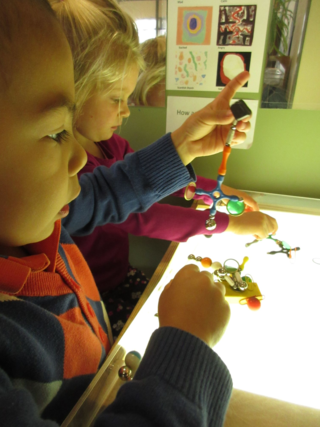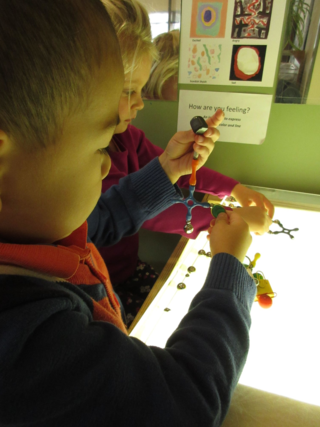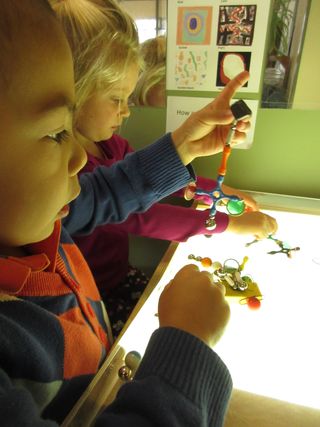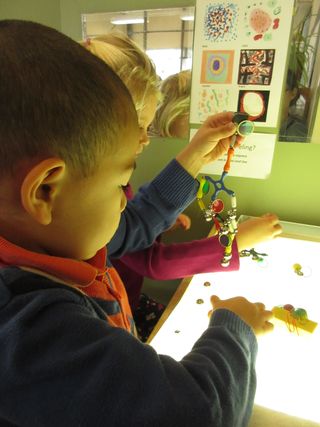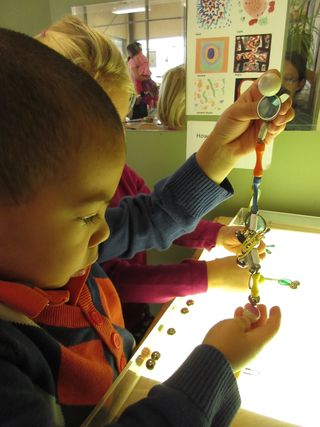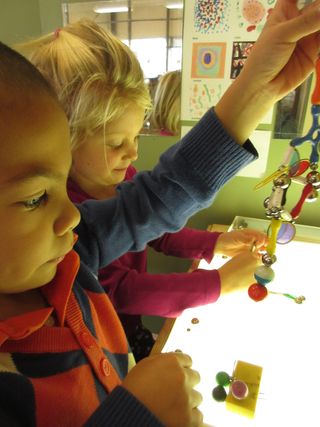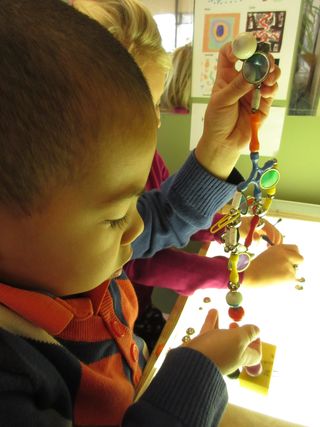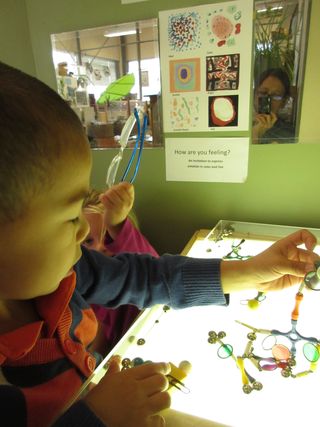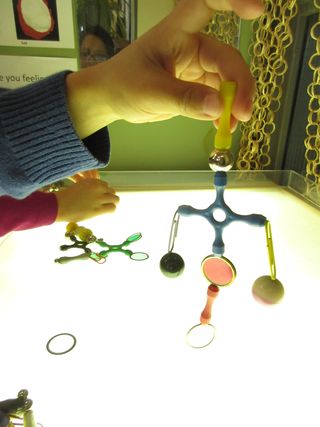Children and Teachers as Researchers

Researchers pay attention to their questions, theories and ideas by listening for what provokes, inspires, challenges and engages them. At Opal School, the teachers see themselves as researchers alongside the children with much to learn from them. As Loris Malaguzzi, founder of Reggio Schools, states, “The things for children and about children are best learned from children.” What new questions and perspectives will emerge for us about children and learning environments where children’s questions, ideas and thinking are placed at the heart of our work with them?
Below is an encounter that a child had at the table with magnets. It was his first encounter with this material and I was curious to know how he might approach this new material and what he might reveal about himself as a researcher. Although this story focuses on one child, it is a story that represents our intentions and approach to working and learning alongside children. As you read this story, what connections are you making to your own work with children?
“It’s a big boy thing.”
I wondered if within this statement, he was asking, What can I do here? Am I a big boy?
“I made a big-boy-booie.”
Perhaps he is posing a theory – Big boys make things – to address his unspoken questions.
“It’s a family. I made a family. It’s all the people in my family.”
As he finds a story within the materials, I wonder if he is also asking, what other possibilities live in these materials?
If story is a natural learning strategy that he uses for making meaning, I wonder: What other stories will he tell? What other materials might we offer him to explore his world through story?
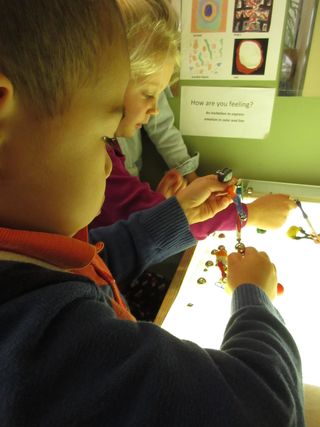
He then adds on marbles on the end, one after the other, and adds subsequent strands from each branch of the base magnet.
It seems like he might be wondering, what happens when I add on? How will it change it?
He observes the strands sticking together and states: “It’s a chainsaw kumasa.”
From the longest strand he adds more marbles until…
The materials present an unexpected surprise. The strand becomes too heavy and the long strand breaks!
In this moment I am curious. How will he respond to this problem? How might his response become a reference point for other problems he encounters during his days at school?
He invents a strategy to support the strand from breaking by holding the bottom end with his hand.
It seems like he is asking, Will they hold if I support from underneath with my hand as I add on and release slowly?
Yes!
He tests his strategy of giving support to the added marbles with his other hand over and over.
After a time he slowly begins to lower the strand to the table.
He seems to be asking, How does it change when the strand touches the table?
He begins again, perhaps wondering – What new possibilities might I discover?
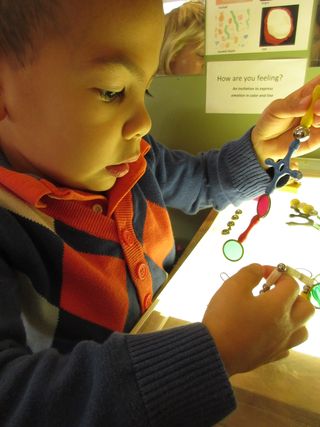
“Look at this! It’s a robot! I’m working on my robot!”
As I hear him invite others to see his idea, I wonder about the power of materials as a way to mirror back to himself and his community his growing sense of connection and agency. How can I build upon this for him?
“It’s a skateboard robot!”
(Exploring a connection while trying on his neighboring partner’s skateboarding idea.)
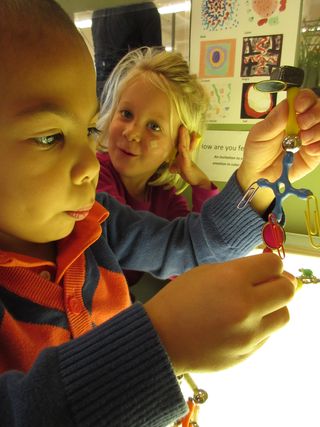
“Now it’s a cutter-cutter. It’s something that cuts down trees! Zzzzzzzzzzt!”
Additional wonderings I have for this child and encounter:
What other materials will so fully engage him and reveal his thinking?
In sharing it with others, what new theories, questions and ideas will emerge?
What does this encounter help me to better understand about who this child is? About childhood?
Carlina Rinaldi writes, “If we know how to listen to them, children can give back to us the pleasure of amazement, of marvel, of doubt…the pleasure of the “why”. Children can give us the strength of doubt and the courage of error. They can transmit us to the joy of searching and researching…the value of research, as an openness toward others and toward everything new that is produced by the encounter with others.”
This encounter captured my attention for several reasons. I knew that this new provocation with magnets held many possibilities for revealing children’s natural learning strategies, and I was curious to witness these unfold with as many children as possible. I was particularly curious in this child’s encounter, as he had just said a tenuous goodbye to his caregiver moments earlier, and I was curious about the power of this material to capture his attention and reveal to him his place as a protagonist in this new learning community in the questions and learning he would likely uncover. Just how long this material held his attention was remarkable. These photos are just a sampling of an even longer string of explorations and discoveries with him and the magnets. If we believe that children arrive at school with many natural learning strategies for making meaning their world (below), what is our obligation to listen and reflect on the implications of these experiences?
NATURAL LEARNING STRATEGIES OF CHILDREN
- Using the senses to look, touch, smell, listen and taste
- Engaging in play, imagination and games
- Using story to create meaning and see relationships
- Tinkering – staying open to what’s possible in the moment
- Taking things apart, reassembling them, linking them together in new ways
- Using metaphor and poetic language to uncover and create meaning
- Engaging others in social interaction and collaboration
- Being willing to take risks, and experimenting in the absence of fear
As you read this encounter, what research questions and perspectives come up for you? What other possibilities are you imagining? Please share your thinking with us in the comments section.

